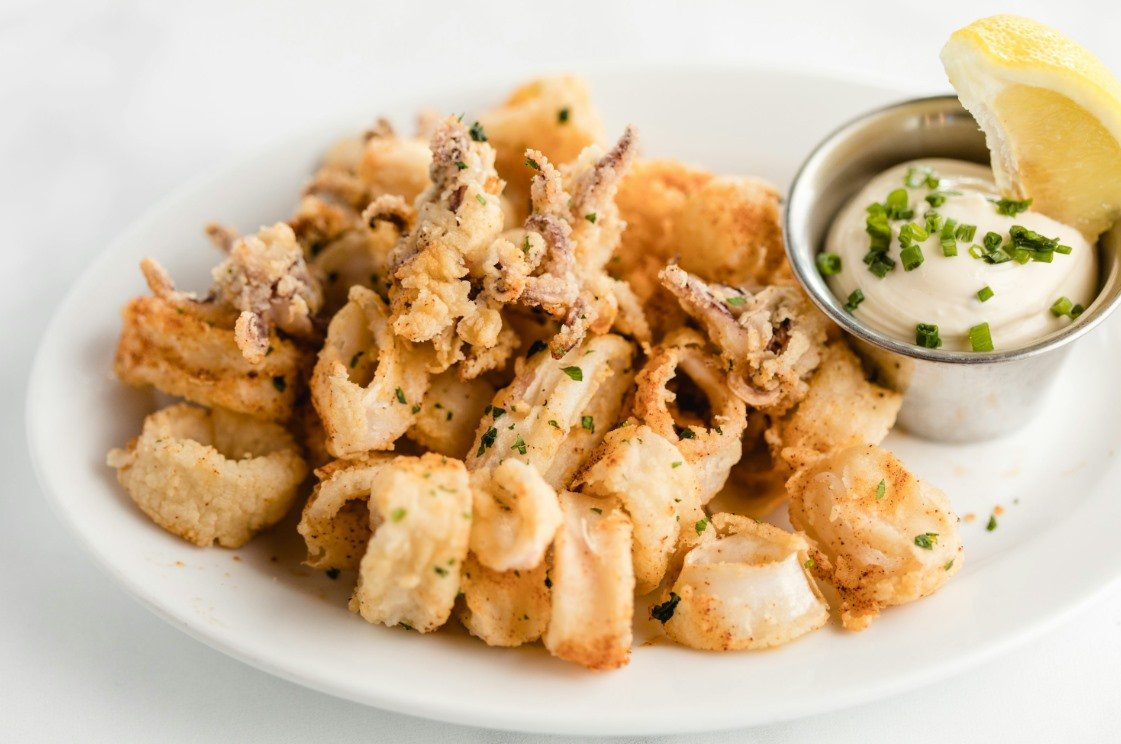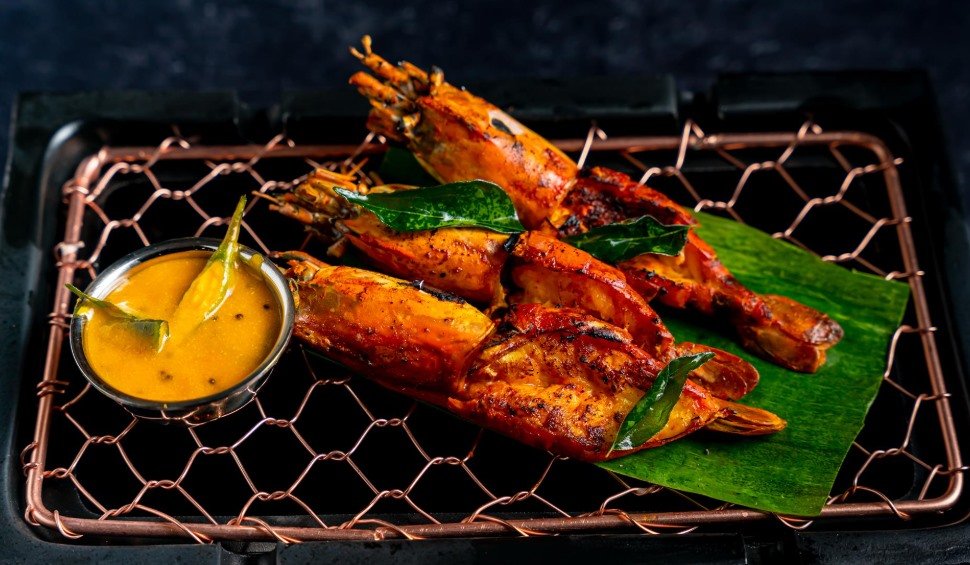
Calamari is a dish made from squid, a sea creature that belongs to the mollusk family. It is enjoyed all around the world and is prepared in many different ways. Some people prefer it grilled or sautéed, while others love the famous version of fried calamari served with lemon or dipping sauce. But where did calamari originate, and how did it become one of the most popular seafood dishes worldwide? To answer that, we have to look at its history, cultural roots, and how it spread from coastal fishing villages to international cuisine.
The Early Origins of Calamari
The word “calamari” comes from the Italian word for squid, “calamaro.” This already gives a clue about its connection to Mediterranean cuisine. Squid has been eaten by humans for thousands of years, long before it was called calamari. Archaeological findings show that ancient people living near the Mediterranean Sea, including Greeks and Romans, fished and cooked squid regularly. Ancient Greek writings describe recipes involving squid and octopus, while Roman cookbooks such as “Apicius” mention seafood dishes that resemble early forms of calamari. These early civilizations valued squid for being easy to catch and versatile to cook. They would boil, grill, or fry it, depending on local ingredients and cooking methods. In coastal regions of Italy and Greece, squid was a common food among fishermen and their families. The dish was not seen as fancy but as simple, fresh seafood.
Calamari in the Mediterranean
As trade and travel expanded across the Mediterranean, squid became a shared part of many regional cuisines. Italians, Greeks, and Spaniards all developed their own ways of cooking it. In Italy, fried calamari became a traditional coastal dish. Greeks often prepared squid with olive oil, lemon, and herbs. In Spain, it evolved into dishes such as “calamares a la romana” or “calamares fritos,” which are still popular tapas options today. The Mediterranean connection is important because it shaped how calamari is prepared and enjoyed. The use of olive oil, citrus, and light breading reflects the flavors of this region. The simplicity of these dishes also made them easy to reproduce, helping calamari spread beyond its original roots. The Mediterranean diet, which focuses on fresh seafood and healthy fats, gave calamari a natural place in many traditional meals.
The Spread of Calamari Around the World
The popularity of calamari did not remain limited to the Mediterranean. As European explorers and immigrants traveled across the globe, they brought their food traditions with them. Italian immigrants played a major role in spreading calamari to North and South America. In the United States, for example, calamari began appearing in Italian restaurants in the early 20th century. For decades, it was mainly enjoyed within Italian-American communities. It wasn’t until the 1970s and 1980s that calamari started to appear widely on restaurant menus. Fried calamari became especially popular in the United States as a bar appetizer or seafood entrée. Around the same time, Asian cuisines that already included squid dishes—such as Japanese, Korean, and Chinese cooking—began to influence Western menus as well. In Japan, squid has long been used in sushi, tempura, and grilled dishes. This cross-cultural exchange helped calamari gain global recognition. Today, whether you visit an Italian restaurant, a Greek taverna, or a Japanese sushi bar, you are likely to find some version of calamari on the menu.
The Role of Globalization and Fishing
The rise of international trade and global fishing industries also helped calamari become more accessible. Squid is found in many oceans around the world, which makes it a reliable source of seafood. Countries like Spain, Italy, Japan, China, and the United States are among the largest producers and consumers of squid. As refrigeration and shipping improved, it became easier to transport fresh or frozen squid internationally. This helped restaurants everywhere include calamari in their menus. The growing interest in Mediterranean-style food also boosted its popularity, especially among people who wanted healthier or lighter seafood options.
Regional Variations of Calamari
Even though calamari has a Mediterranean origin, different cultures have developed their own unique versions. In Italy, one of the most loved dishes is calamari fritti, where squid rings are lightly breaded and fried until crisp, then served with lemon wedges or marinara sauce. In Greece, kalamarakia tiganita is similar but often seasoned with local herbs and olive oil, making it taste distinctively Greek. Spain offers calamares a la romana, a popular dish served as tapas or in sandwiches called bocadillos de calamares. In Japan, calamari takes a different form. The Japanese have long eaten squid as part of their diet, using it in sushi, sashimi, tempura, and grilled dishes known as ika yaki. Korean cuisine includes spicy stir-fried squid dishes like ojingeo bokkeum, while in China, squid is often cooked with vegetables and sauces in savory stir-fries. These regional variations show that while the core ingredient remains the same, the cultural influences shape how calamari is seasoned and served. What began as a Mediterranean staple has become a dish with worldwide interpretations.
Calamari in Modern Cuisine
In modern times, calamari has become a popular item on restaurant menus around the world. In many Western countries, fried calamari is one of the most common ways people encounter squid. Its crispy texture and mild flavor appeal to a wide audience, even those who are new to seafood. Fine dining restaurants have also elevated calamari with gourmet touches such as stuffed squid, calamari salads, and pasta dishes featuring squid ink. In addition to traditional recipes, chefs continue to experiment with new cooking styles, mixing Mediterranean and Asian influences to create fusion dishes. The growing awareness of healthy eating has also renewed interest in calamari as a lean source of protein that is low in fat and calories.
Nutritional Value of Calamari
Calamari is not just delicious; it is also nutritious. A serving of calamari provides protein, vitamins, and minerals such as vitamin B12, phosphorus, and selenium. It contains omega-3 fatty acids, which support heart health. However, the health value of calamari depends on how it is cooked. Fried calamari is tasty but higher in calories and fat due to the oil used for frying. Grilled or steamed calamari is a healthier alternative that retains flavor without extra fat. Many people enjoy it as part of a balanced diet, especially in Mediterranean and Asian cuisines where seafood plays an important role.
Why Knowing the Origin Matters
Understanding where calamari originated helps us appreciate how food connects different cultures. It shows how simple seafood, like squid, became a global favorite because of migration, trade, and culinary creativity. Knowing the history behind calamari also helps people make informed choices when eating seafood. The fishing industry affects ocean ecosystems, so it is important to choose sustainably caught squid whenever possible. Many countries now focus on responsible fishing practices to protect marine life. The story of calamari is not just about a dish but about how human culture and the environment work together to shape what we eat.
The Lasting Legacy of Calamari
Calamari has come a long way from its humble beginnings along the Mediterranean coast. It started as a simple meal for fishermen and families and evolved into an international dish found in casual cafes and fine dining restaurants alike. Whether enjoyed as fried rings in Italy, grilled skewers in Greece, or sushi rolls in Japan, calamari represents the blending of tradition and innovation. Its popularity continues to grow because it adapts easily to new tastes and cooking trends. While its exact birthplace may not be tied to one specific country, the Mediterranean remains its cultural home. The history of calamari reminds us that good food often travels far, connecting people through shared tastes and timeless recipes.
Conclusion
So, where did calamari originate? The dish traces its roots back to the Mediterranean region, where ancient Greeks, Romans, and Italians first cooked squid in simple, flavorful ways. Over time, it spread across Europe, Asia, and the Americas, taking on new forms in each culture. Today, calamari is a global favorite that continues to evolve with changing cuisines and tastes. Its story is one of cultural exchange, tradition, and the love of seafood that unites people around the world. Whether you enjoy it fried, grilled, or stuffed, calamari remains a delicious example of how history and flavor come together on the plate.
Related Post: How to Cook Calamariere at Home Step by Step



